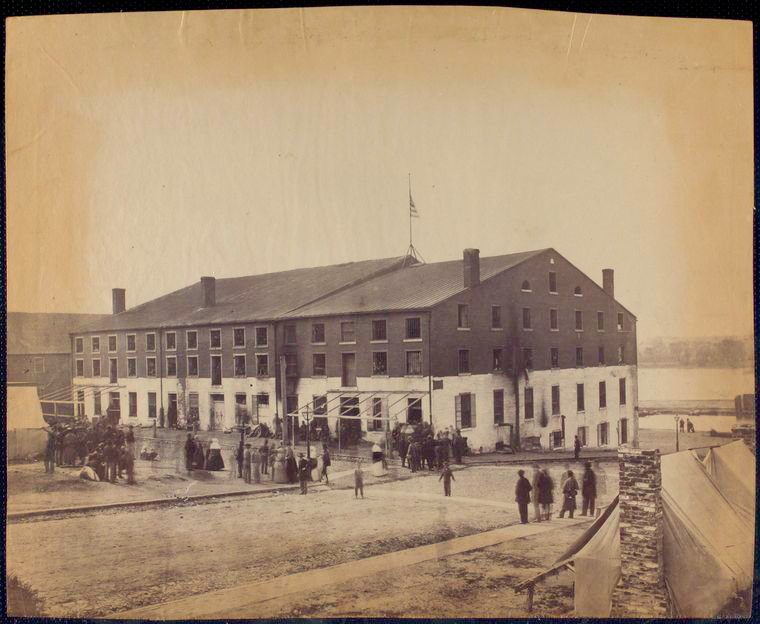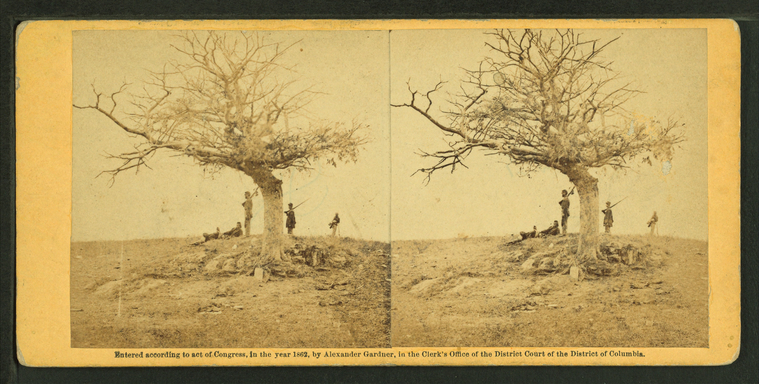United States Sanitary Commission Processing Project: A Sense of History
 The various “relief” activities of the U.S. Sanitary Commission, whether “general relief,” “field relief,” or “special relief,” are reflected throughout its own records, now held in the NYPL's Manuscripts and Archives Division. The group of material known as the “Special Relief Archives,” however, is not quite what you would expect to find from its name. Project archivist Melissa Haley discusses her work with this record group in the collection, which contains documents created at different times in the Commission’s existence and for different purposes. As a result, the contexts of their creation (during and after the Civil War) will be restored and made clear.
The various “relief” activities of the U.S. Sanitary Commission, whether “general relief,” “field relief,” or “special relief,” are reflected throughout its own records, now held in the NYPL's Manuscripts and Archives Division. The group of material known as the “Special Relief Archives,” however, is not quite what you would expect to find from its name. Project archivist Melissa Haley discusses her work with this record group in the collection, which contains documents created at different times in the Commission’s existence and for different purposes. As a result, the contexts of their creation (during and after the Civil War) will be restored and made clear.
Over to Melissa: 
A Union officer and prisoner of war writes to the U.S. Sanitary Commission from inside Libby Prison in Richmond, Virginia, detailing conditions there and at the nearby prison at Belle Isle, including a tally of recent deaths. A former POW describes the sufferings he endured at the hands of a Confederate major in Andersonville Prison, Georgia.
And a Wisconsin newlywed searches for information about her imprisoned husband, hoping in vain that the Sanitary Commission could provide the “much wished for intelligence.”  Bella Sleeper of Berlin, WI to M.M. Marsh, U.S. Sanitary Commission, Jan 12, 1865.
Bella Sleeper of Berlin, WI to M.M. Marsh, U.S. Sanitary Commission, Jan 12, 1865.
"If it be sad news, I pray you not keep it from me, I can bear it, and I'll try to bear it as an American woman should."

 Detail from original catalogOne challenge in working with this group of records was to figure out exactly what was in the boxes. I had a catalog created by the USSC to work from, though it soon became clear that many items did not appear on the original inventory, and the bundles had become disordered over time. The documents, notes, and drafts had been grouped into topical categories, which I reconstructed using the original catalog to see what was present, missing, and not recorded.
Detail from original catalogOne challenge in working with this group of records was to figure out exactly what was in the boxes. I had a catalog created by the USSC to work from, though it soon became clear that many items did not appear on the original inventory, and the bundles had become disordered over time. The documents, notes, and drafts had been grouped into topical categories, which I reconstructed using the original catalog to see what was present, missing, and not recorded.
Now that we have a more accurate picture of box contents, the material will be far more accessible for research when the collection reopens in 2013. Bundled documents that had been “checked out” of other USSC office record groups will be flattened and restored to their proper locations within the collection. Drafts of chapters and notes will be more accurately listed and described, and the material will ultimately be easier to use.
 Unpublished drafts: Department of the Gulf, Antietam
Unpublished drafts: Department of the Gulf, Antietam
For example, an unpublished account of the Commission’s relief efforts following the battle of Antietam and the several chapters detailing work by the USSC in Union-occupied New Orleans, none of which appeared on the original inventory, will be readily located by researchers.
These Commission “relief” historians at work in the 1860s and '70s may have never completed their assigned tasks, but their writings are now being organized, described, and preserved, all to make them accessible for future explorations. Their endeavors were not in vain.

Read E-Books with SimplyE
 With your library card, it's easier than ever to choose from more than 300,000 e-books on SimplyE, The New York Public Library's free e-reader app. Gain access to digital resources for all ages, including e-books, audiobooks, databases, and more.
With your library card, it's easier than ever to choose from more than 300,000 e-books on SimplyE, The New York Public Library's free e-reader app. Gain access to digital resources for all ages, including e-books, audiobooks, databases, and more.
If you don’t have an NYPL library card, New York State residents can apply for a digital card online or through SimplyE (available on the App Store or Google Play).
Need more help? Read our guide to using SimplyE.
Comments
Commission history
Submitted by Peter Duveen (not verified) on April 1, 2011 - 6:12pm
Thank you for your comment
Submitted by Melissa Haley (not verified) on April 11, 2011 - 10:36am